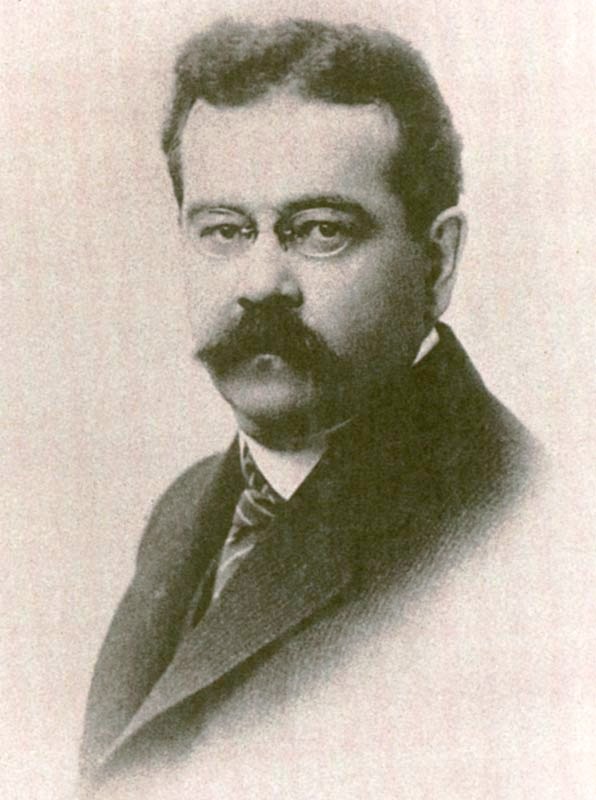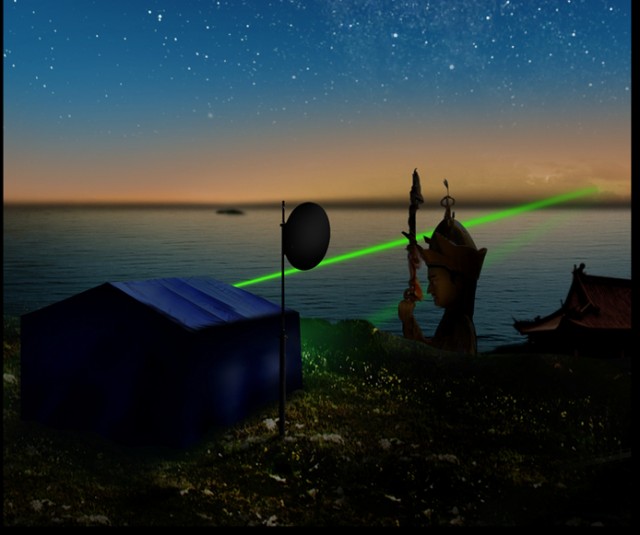 The word teleportation was coined in 1931 by American writer Charles Fort to describe the strange disappearances and appearances of anomalies, which he suggested may be connected. He joined the Greek prefix tele- (meaning "distant") to the Latin verb portare (meaning "to carry"). Fort's first formal use of the word was in the second chapter of his 1931 book, Lo!: "Mostly in this book I shall specialize upon indications that there exists a transportory force that I shall call Teleportation." Fort added "I shall be accused of having assembled lies, yarns, hoaxes, and superstitions.
The word teleportation was coined in 1931 by American writer Charles Fort to describe the strange disappearances and appearances of anomalies, which he suggested may be connected. He joined the Greek prefix tele- (meaning "distant") to the Latin verb portare (meaning "to carry"). Fort's first formal use of the word was in the second chapter of his 1931 book, Lo!: "Mostly in this book I shall specialize upon indications that there exists a transportory force that I shall call Teleportation." Fort added "I shall be accused of having assembled lies, yarns, hoaxes, and superstitions.
When Gene Roddenberry was planning the early episodes of the cult sci-fi series Star Trek Paramount studios, who financed the project, said the special effects necessary to recreate ships taking off and landing were too expensive. Roddenberry needed another way to get his characters down onto the surface of the uncharted worlds they were visiting. "He said, 'we'll just beam them onto the planet and save a tonne of money',"
 That money-saving decision did much to cement teleportation as the epitome of the sci-fi way to get around, but teleportation is actually already being done by physicists. It relies on a deeply strange phenomenon called quantum entanglement, which physicists have already used to "teleport" a photon 89 miles between La Palma and Tenerife in the Canary Island group.
That money-saving decision did much to cement teleportation as the epitome of the sci-fi way to get around, but teleportation is actually already being done by physicists. It relies on a deeply strange phenomenon called quantum entanglement, which physicists have already used to "teleport" a photon 89 miles between La Palma and Tenerife in the Canary Island group.The scientists did it by exploiting the "spooky" and virtually unfathomable field of quantum entanglement - when the state of matter rather than matter itself is sent from one place to another. Tiny packets or particles of light, photons, were used to teleport information between telescopes on the two islands. The photons did it by quantum entanglement and scientists hope it will form the basis of a way of sending encrypted data.
quantum entanglement has so far been carried out only on the simplest forms of matter and scientists believe that a fundamentally new approach will be needed if it can ever be used for teleporting people or even non-living objects.
Robert Ursin of the University of Vienna said the latest experiment in quantum entanglement shows its potential as a means of communicating sensitive information via satellites using quantum cryptography, that could effectively deploy an uncrackable security code.

Quantum communication requires transmitting an arbitrary quantum state between two points, similar to how ordinary communication sends bits (voice or other data) across distances. However, a quantum state is a small amount of information, typically carried by a single photon, so many methods used in ordinary communication are out of the question (including broadcasting).
In fiber optic quantum networks, photon loss is large over significant distances, requiring the use of quantum repeaters. Point-to-point free-space transmission—either open-air or through the vacuum of space—is better, though larger distances allow the beam of photons to disperse. Atmospheric turbulence also contributes to photon loss in the air, with the losses increasing the farther the signal must travel.
One of the biggest challenges in point-to-point communication, however, is target acquisition by the transmitter and/or receiver. If the ground shifts slightly due to settling or tectonic activity, or atmospheric turbulence makes the receiver appear to move, the laser transmitting the signal can miss its target entirely. With few photons to spare in quantum communication, real-time tracking and acquisition is necessary. The researchers solved this problem using beacon lasers, bright beams that carry no information, but can be used to aim both transmitter and receiver, and wide-angle cameras.
As usual in quantum entanglement experiments, the group created entangled photons by stimulating a crystal with ultraviolet light. This produces a pair of photons with the same wavelength, but opposite (and unknown) polarization values. These entangled photons were subsequently sent to detectors, where their polarization quantum states were measured and compared. In the first experiment, one photon was sent 97km across Qinghai Lake (using a telescope to focus the beam), while the second was analyzed locally. Using these photons, the researchers copied the quantum state from the laboratory to the far station, achieving quantum teleportation over a much larger distance than previously obtained.
However, quantum communication sometimes also requires coordination between two distant receivers, so the researchers set up the transmitter on an island in the lake. The receivers were 51.2 and 52.2 km from the photon source respectively, on opposite shores of Qinghai lake, forming a triangle with the transmitter. The distance between the receivers—101.8km—was far enough to create a 3 microsecond delay between measurements of the photon polarization. Given this setup, there was no possible way for the two receiving stations to communicate. Yet the photons they registered were correlated, indicating entanglement was maintained. These experiments provide not only a proof of principle for free-space quantum communication, but also a means to test the foundations of quantum theory over larger distances than before. With very large detector separation, quantum entanglement experiments can help differentiate between standard and alternative interpretations of the quantum theory.
Though the long-distance aspect is promising, the fact that they set up on the shores of a lake (where no intervening obstacles exist) and that the experiment could only be performed successfully at night indicate its limitations. Author Yuao Chen told Ars via e-mail that they are working on solving the problem for daytime communication, but since the signal consists of single photons, it's not clear how this will work—the number of received photons fluctuated with the position of the Moon, so noise appeared to be a significant problem for them. Point-to-point communication will need to solve that problem as well before satellite-to-ground quantum networks are practical.





No comments:
Post a Comment